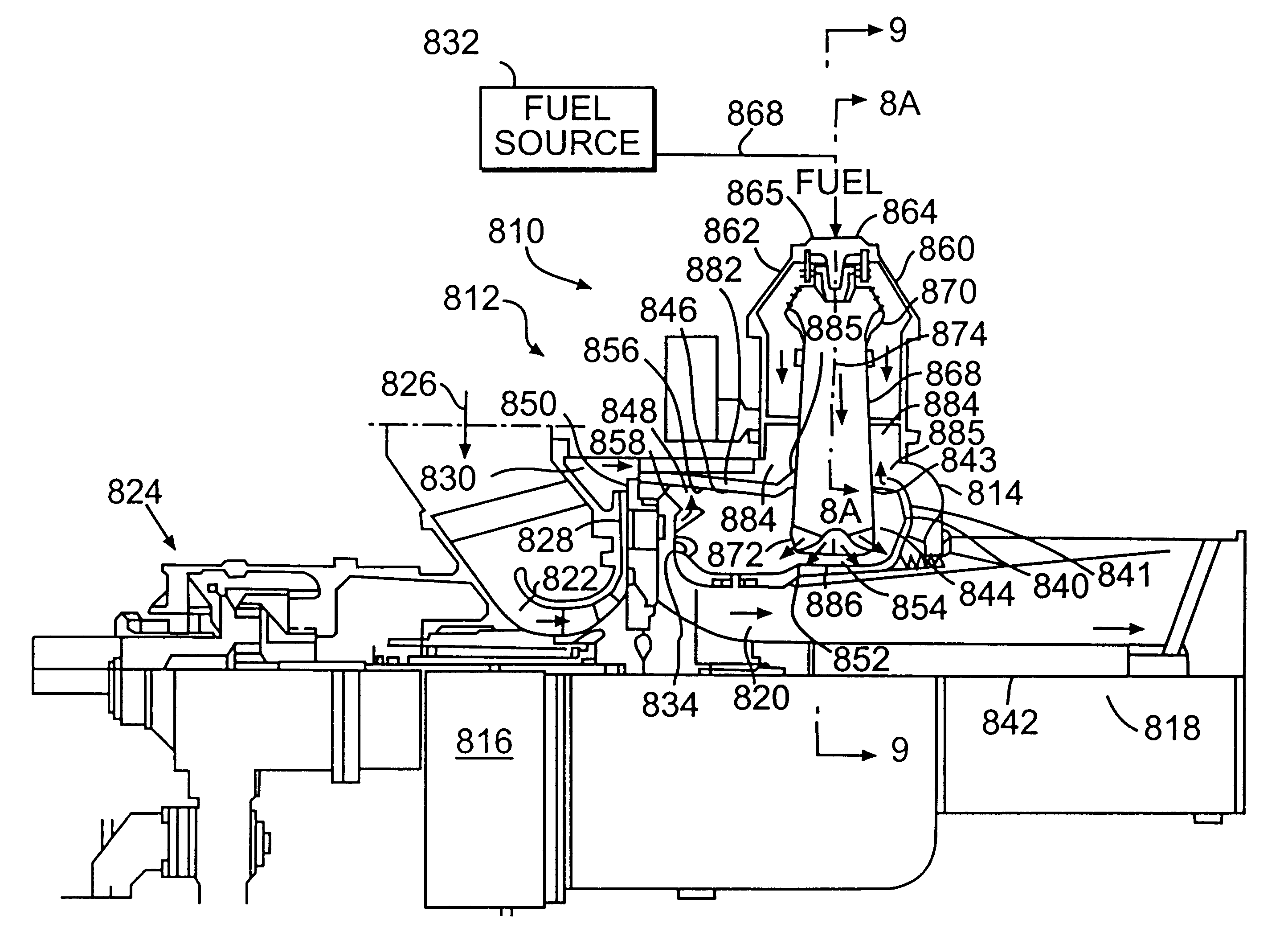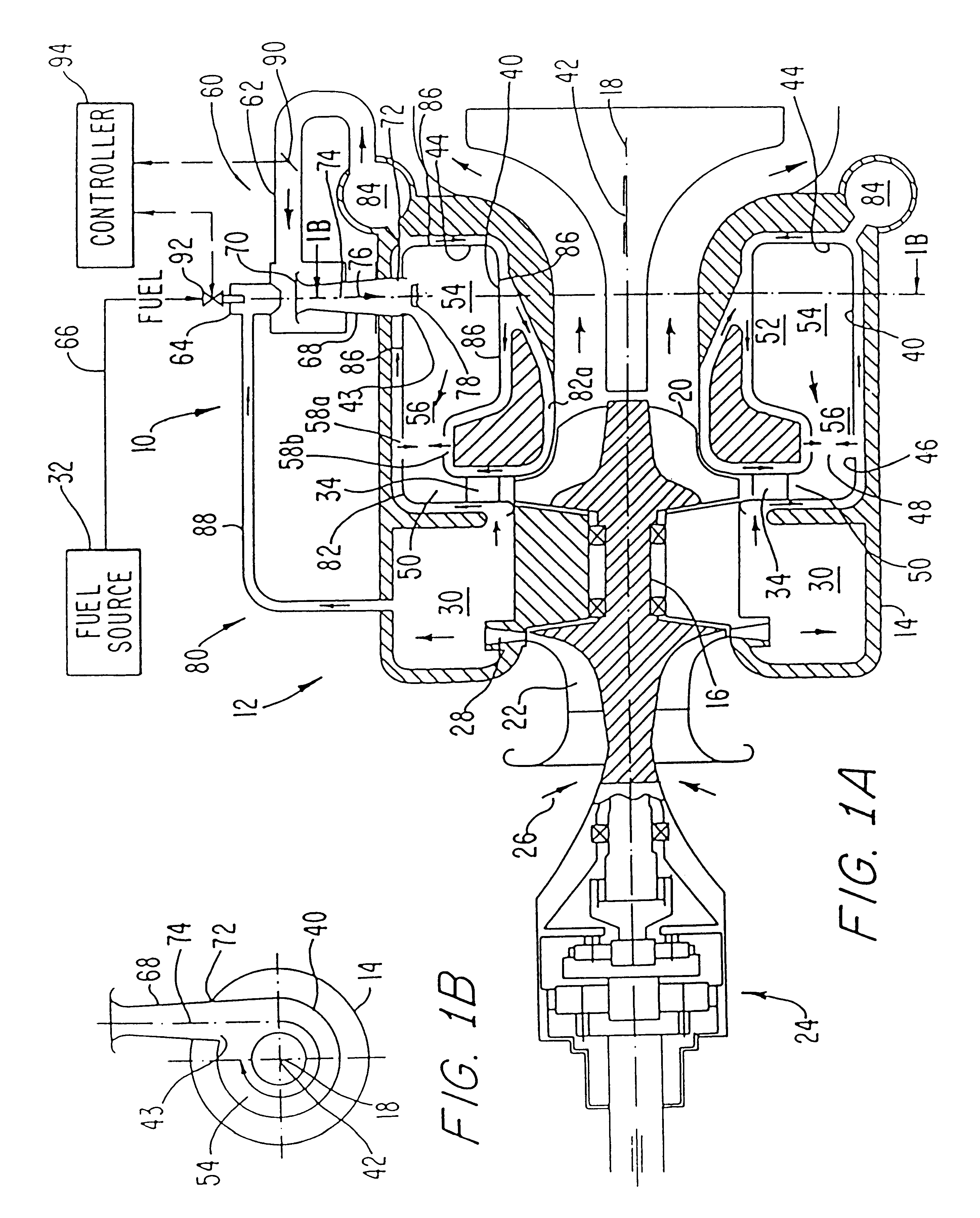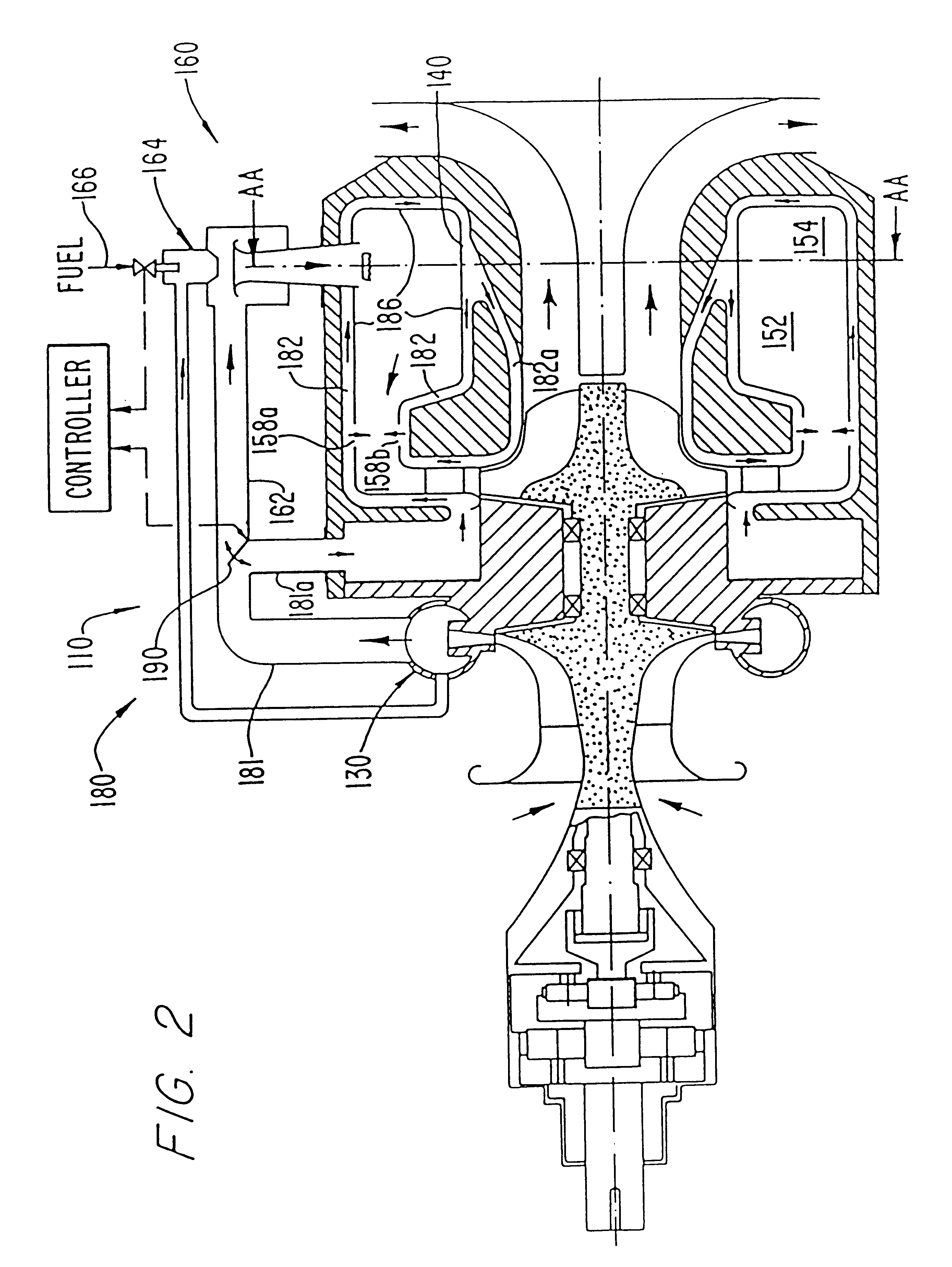Convectively cooled, single stage, fully premixed controllable fuel/air combustor
a technology of air combustor and convective cooling, which is applied in the direction of combustion process, turbine/propulsion fuel control, lighting and heating apparatus, etc., can solve the problems of high initial cost, control difficulty, and reduced total
- Summary
- Abstract
- Description
- Claims
- Application Information
AI Technical Summary
Benefits of technology
Problems solved by technology
Method used
Image
Examples
Embodiment Construction
In order to assess the performance of the annular combustor system of the present invention, an annular combustor having the fuel / air premixer as shown in FIGS. 3A-3C was atmospherically tested using an external source of air and a gaseous fuel (natural gas). Table 1 presents values of the important dimensions of the apparatus used in the test.
Tests were done at flow conditions corresponding to idle and full load. Flow rates to achieve a preselected fuel / air ratio were set by manually setting compressed air valve 290 and the fuel valve (not shown) rather than by a controller element although a controller element could have been used. Table 2 presents the fuel and compressed air flow rates and other important parameters as well as the measured NO.sub.x levels and approximate CO emission levels for the tests.
The above indicates remarkably low NO.sub.x emission levels which, even if scaled for high pressure operation, still would be well below the values considered representative of st...
PUM
 Login to View More
Login to View More Abstract
Description
Claims
Application Information
 Login to View More
Login to View More - R&D
- Intellectual Property
- Life Sciences
- Materials
- Tech Scout
- Unparalleled Data Quality
- Higher Quality Content
- 60% Fewer Hallucinations
Browse by: Latest US Patents, China's latest patents, Technical Efficacy Thesaurus, Application Domain, Technology Topic, Popular Technical Reports.
© 2025 PatSnap. All rights reserved.Legal|Privacy policy|Modern Slavery Act Transparency Statement|Sitemap|About US| Contact US: help@patsnap.com



